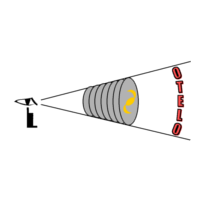Galactic Astronomy
Associated to the main OTELO project, a broadband survey at a detection level of magnitude 23 (B band) is also performed for a field of view of about 14 square degrees corresponding to the lowest selected redshift (z = 0.08). This huge amount of data will contain invaluable information about the stellar content of a deep portion of our own Galaxy. Different galactic projects will provide new and important insights into classical and new Galactic questions.
Apart from the disk and central bulge of our Galaxy, there exists a low-density stellar halo, which is almost spherical and has a spatial extent of several times the radius of the disk. This component is mainly populated by old, low-metallicity stars, which are distributed either as field stars or as members of globular clusters. A group of dwarf satellite galaxies also orbit the Milky Way. Both globular clusters and dwarf galaxies contribute to the halo field stars by mass loss and disruption generated by the galactic tidal field.
Stars that have been tidally stripped from globular clusters or dwarf satellites are expected to orbit in more or less long-lived streams. Several moving groups have been detected in the halo of our Galaxy that could be envisaged as the signature of recent strong mass loss or merging events. Another way to tackle halo structures and their origin is through the analysis of multicolour, wide field surveys with uniform coverage of dozens of squared degrees, such as OTELO.
The OTELO field location is still not defined although several selection criteria are contained in the survey definition document. Fields with a high probability of containing a tidal tail population which fulfil the general selection criteria could be studied and provide an interesting galactic by-product.
OTELO survey proposes important synergies with two other Galactic surveys. Together with kinematic data from Gaia and the J-PAS photometry, they will form a unique sample for a better characterization of the stellar content of the different streams populating the halo.
See also: Related Publications
